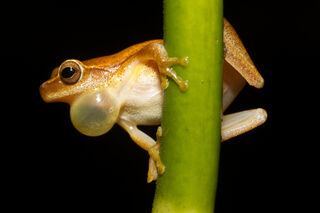Environment
Noise Pollution Hampers Animal Communication
Many species adjust their acoustic signals in response to human-made noise.
Posted December 4, 2020 Reviewed by Devon Frye

According to the World Health Organization, noise caused by human activities is one of the most hazardous forms of pollution. Now, a new study shows that human-made noise could hamper the communication of a variety of different animal species, from insects to frogs to birds. The meta-analysis found that animals exposed to human-made noise adjusted parameters of their acoustic signals, with potential consequences for mate attraction, territory defense, and parent-offspring communication.
Noise from human activities—such as transportation, shipping, and industry—differs from the naturally occurring soundscapes within which animals have evolved.
“It is typically loud and low-frequency,” says Hansjoerg Kunc, a biologist at Queen’s University Belfast who led the new study. “Many acoustic signals are in the same frequency range as anthropogenic (human-made) noise, whereas in nature, often noise is distributed more equally across a wider range of frequencies.”
Kunc, with colleague Rouven Schmidt, conducted a meta-analysis to investigate how species differ in their sensitivities to human-made noise. The researchers analyzed data from 31 different animal species, collected from 23 experimental studies in which animals were exposed to human-made noise. They studied the effects of noise on different components of acoustic signals, including the amplitude (loudness), frequency (pitch), complexity, duration, and rate. For each of these components, the researchers quantified both the magnitude and direction of adjustments in response to human-made noise.

Kunc and Schmidt found that animals adjust the components of their acoustic signals when exposed to noise, but the direction of adjustments differed among species. For instance, animals changed the duration of their signals in response to noise, but some species shortened them while others increased signal duration.
Given the importance of acoustic communication to many animals, Kunc and others are concerned that these adjustments could have repercussions for individual animals and, potentially, populations and ecosystems. Females of many species decide on mates based on acoustic qualities, such as signal duration, rate, and complexity. Noise-induced adjustments to male songs could make it more difficult for females to choose the highest quality mate.
The analysis shows that noise affects acoustic signals, but whether that change is positive or negative may depend on the species or context. For instance, calling louder may make it more likely that potential mates will hear you in a noisy environment, but may also attract more predators.

Thus far, most of the studies of the effects of noise on animals have focused on the senders of acoustic signals. To unravel the downstream ecological effects of human-made noise, more research incorporating the receivers of such signals is needed. We still have a limited understanding of the potential consequences of noise for receivers, as well as the long-term effects of noise on populations and communities.
Kunc and Schmidt argue that the difference in sensitivity among species has important conservation implications. Their analysis shows it is not enough to assess the consequences of human-made noise for only a few species. A “one size fits all” legislation cannot protect species effectively since the magnitude and direction of responses vary so much among species.
“Given what we know about the effects of noise on animals, the best conservation approach to protect different species is to preserve the natural soundscapes to which animals have adapted,” says Kunc.
“When we protect habitats, we should be including natural soundscapes, free from anthropogenic noise, as part of those habitats.”
References
Kunc HP, Schmidt R. Species sensitivities to a global pollutant: A meta-analysis on acoustic signals in response to anthropogenic noise. Glob Change Biol. 2020;00:1–14. Doi: 10.1111/gcb.15428.


